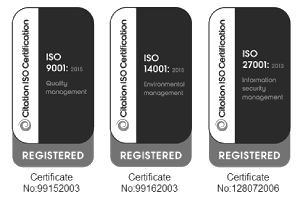Bringing a steel giant back to life
Duncan Laird, Head of Urban Places at the National Trust, talks reimagining Manchester’s Castlefield viaduct; Creating a cultural, heritage and greenspace amenity in the heart of the city.
A 330-metre-long steel viaduct sits proudly in Castlefield, the oldest part of the city of Manchester. It’s an area steeped in rich history: once the site of the Roman fort of Mamucium, and later a hub of the Industrial Revolution crisscrossed by canals and bridges.
Built in 1892, Grade II Listed Castlefield Viaduct was designed by Heenan and Froude, the engineers who developed the iconic Blackpool Tower. The structure once carried three parallel rail lines along which steam locomotives thundered carrying goods and passengers until its closure in 1969. For the last 50 years the structure has been left unused under the management of the Historic Railways Estate (HRE).
Working with HRE and local partners, including the Castlefield Forum, the National Trust (NT) has a vision to reopen the viaduct to the public as an elevated urban park and new cultural and heritage destination for the local community and visitors from further afield. The project is part of delivery of the NT’s urban places strategy where we aim to improve access to nature history and beauty for people in towns and cities.
The project has been in development over the past two years and has quickly moved from an initial business case through to design, planning approval and construction. The project team comprises both in-house National Trust experts and external consultants providing specialist support.
From July 2022 you’ll be able to visit Castlefield Viaduct for free as part of a 12-month pilot opening. During this time there’ll be plenty of opportunities to not only explore part of the structure, but to find out more about the viaduct’s heritage, the city’s long relationship with plants and trees and even pick up some urban gardening tips.
Trees, flowers and shrubs will be planted across half of the deck, creating a green space for visitors and the local community to explore and unwind in. The new planting will be made up of many species including cotton grass, Manchester’s county flower. The variety of plants being added will help attract more birds and pollinators to the viaduct. A section of the viaduct will be left untouched to provide a sense of how nature has reclaimed the space since the site was closed in the late 1960s.
As well as free daily guided visits, we’ll also be running special events throughout the year, including takeovers by partner organisations and the local community. While you’re here you can also visit our ‘partner plots’, where four local organisations will be creating their own urban gardens and works of art.
During the course of the pilot phase, we will seek views and feedback from people on and off site about what the long-term vision of the viaduct could be. This will be bigger, bolder and incorporate both the viaduct and areas around. For example, it could provide a new walking and cycling link supporting active travel in the city and provide increased access to much needed nature and green space for the local community.
By taking a phased approach with extensive ‘hands on’ engagement during the pilot phase we can ensure the more permanent vision for the viaduct has been truly shaped and owned by the people of Manchester. The phased approach also helps to de-risk delivery and generate confidence and momentum for what is a complex project with challenges around planning, funding, heritage re-use and ownership.
Castlefield Viaduct has the potential to become an iconic urban heritage re-use project of national significance and the NT is extremely excited working with partners to bring this majestic steel giant of the industrial revolution back to life and delivering benefit to the nation.
Further information about the project can be found on the National Trust website - https://www.nationaltrust.org.uk/castlefield-viaduct
• Duncan spoke on this topic at the APSE Parks Seminar on 30 March. You can download Duncan’s presentation from the APSE website HERE.


.png)



.png)